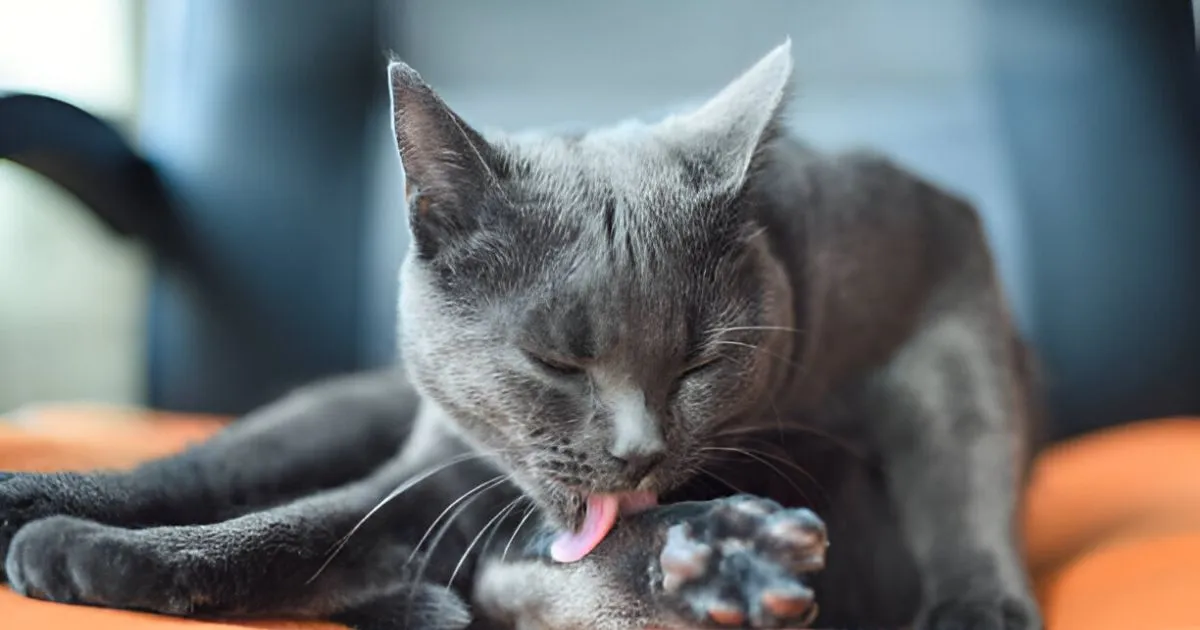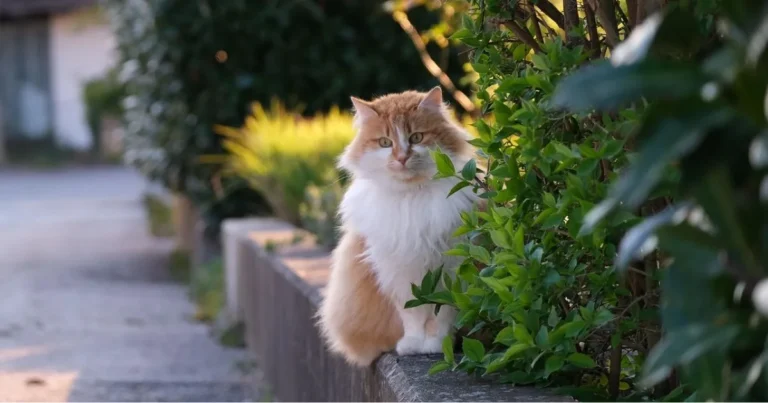Why Do Cats Clean Each Other? The Science of Feline Grooming
Table of Contents
Why Do Cats Clean Each Other?
Watching cats groom each other is truly captivating. It’s more than just keeping clean. It’s a way for them to talk and connect with each other.
So, why do cats groom each other? It’s not just about staying clean. It helps them trust each other, lowers stress, and strengthens their bonds. Both wild and domestic cats do this, showing it’s a natural part of their lives.
Learning about cats grooming each other reveals a lot about their social lives. Every touch and lick says something about their feelings and who’s in charge.
Key Takeaways
- Mutual grooming is a critical social interaction for cats
- Grooming helps establish and maintain social hierarchies
- Cats use grooming as a form of non-verbal communication
- Mutual grooming reduces stress and builds trust
- This behavior is instinctive in both wild and domestic cats
Understanding Social Grooming in Cats
Cats licking each other is more than just cleaning. It’s a complex social behavior that’s key to their communication and building relationships. When you see cats grooming each other, you’re seeing a fascinating part of their social lives.
The Evolution of Mutual Grooming Behavior
The reason cats lick each other goes back to their early social times. In wild cat colonies, grooming has many important roles. Cats developed this behavior to:
- Establish social hierarchies
- Create and maintain group bonds
- Reduce social tension
- Demonstrate trust and affection
Social Bonding Through Allogrooming
Allogrooming is a special way cats connect with each other. It’s not just about cleaning – it’s a powerful way for cats to communicate and form bonds. Cats usually groom hard-to-reach areas like the head and neck, showing deep trust and closeness.
When Cats Start Mutual Grooming
Kittens learn to groom each other from their mothers and siblings early on. As they grow, cats keep using grooming as a main way to interact. Adult cats with strong bonds often groom each other as a sign of friendship and family ties.
Understanding these social grooming patterns gives us a deeper look into the complex world of feline relationships and communication.
Why Do Cats Clean Each Other? Natural Instincts Explained
Cats grooming each other is a fascinating behavior. It’s deeply rooted in their natural instincts. This complex social ritual goes beyond simple cleanliness. It reveals intricate aspects of feline communication and relationship building.
The primary reasons why do cats clean each other stem from several key evolutionary and social drivers:
- Maternal Care: Mother cats first introduce grooming as a survival mechanism, cleaning and bonding with their kittens
- Social Hierarchy Establishment: Mutual grooming helps cats define and maintain their social structure
- Scent Sharing: Cats exchange their unique chemical signatures during grooming, creating group identity
Wild cat ancestors developed cats grooming each other as a critical survival strategy. By removing parasites, checking for injuries, and reinforcing social bonds, these behaviors ensured group protection and survival.
In domestic settings, these instincts remain powerful. When your cats groom each other, they’re not just cleaning. They’re communicating trust, affection, and establishing their social connections.
“Grooming is a language of love in the feline world,” says Dr. Sarah Johnson, feline behavior specialist.
Understanding these natural instincts helps cat owners appreciate the complex social dynamics happening right in their own homes.
The Health Benefits of Cats Grooming Each Other
Cats licking each other is more than just cleaning fur. It offers many health benefits that go beyond keeping them clean. This behavior shows a complex system of care and communication in feline groups.
Physical Protection and Wellness
Cats licking each other is a strong defense mechanism. During grooming, cats can:
- Remove parasites like fleas and ticks
- Detect early signs of skin infections
- Clean hard-to-reach body areas
- Distribute natural skin oils evenly
Emotional Healing and Stress Reduction
The act of cats grooming each other releases oxytocin. This hormone helps them relax and reduces anxiety. Mutual grooming acts as feline therapy, helping cats manage stress and stay emotionally balanced.
Building Stronger Social Connections
Grooming is key to social bonding in cats. It helps them establish trust, show affection, and maintain their social hierarchy. This activity is vital for their social bonds.
“Grooming is more than cleanliness—it’s a language of love for cats.” – Dr. Sophia Martinez, Feline Behavior Specialist
Understanding these benefits helps cat owners see the deep meaning behind this simple behavior.
Decoding Cat Licking Behavior and Communication
Cats licking each other is more than just grooming. It’s a complex way of communicating that shows deep insights into their social lives. When cats groom each other, they’re doing more than just cleaning their fur.
Understanding why cats lick each other goes beyond the surface. They use licking as a way to connect and show hierarchy. Here are some key signals cats send through licking:
- Affection and trust – A gentle lick shows emotional bonding
- Establishing social rank within their group
- Marking territory through scent exchange
- Reducing group tension and stress
Different licks mean different things. A soft, rhythmic lick shows friendship and acceptance. But aggressive or rapid licking might mean dominance or conflict.
Watch your cat’s body language during grooming. The direction of their ears, tail, and posture tell more about their communication. Cats licking each other is a complex dance of social interaction, not just about hygiene.
“In the feline world, a lick is worth a thousand words.” – Animal Behavior Experts
Common Areas Where Cats Groom Their Companions
Cats groom each other on specific parts of their bodies. This is not just for cleanliness. It shows how they communicate and bond with each other.
Preferred Grooming Zones
Cats usually groom each other in hard-to-reach spots. They focus on areas like:
- Head and neck area
- Behind the ears
- Upper back
- Shoulders
Strategic Areas Cats Cannot Reach Alone
Some spots are tough for cats to clean by themselves. These hard-to-reach spots are key for mutual grooming:
- Top of the head
- Back of the neck
- Between shoulder blades
- Inner ear regions
Territorial Signals Through Grooming
Grooming is more than keeping clean for cats. It’s a way to share scents and show who’s in charge. This helps keep the group together and avoids fights.
“Mutual grooming is a complex language of feline social interaction, far beyond simple cleaning.” – Feline Behavior Research Institute
By understanding these grooming patterns, you can see the complex social lives of cats at home.
When Cat Grooming Becomes Excessive
Cats licking each other can sometimes be a problem. While it’s normal for them to groom each other, too much can be a sign of trouble. Look out for signs like long licking sessions, skin problems, or hair loss.
Stress and anxiety can make cats groom too much. Changes in the home, new pets, or loud noises can cause this. If you see one cat licking another too hard, it’s time to find out why.
Medical issues can also lead to too much grooming. Problems like parasites, allergies, or skin infections might make cats lick themselves or others a lot. If you see a cat grooming too much, it’s best to take them to the vet.
Keeping your cats calm and happy can help. Give them fun activities, separate spaces, and quiet areas. If you’re worried, talk to a vet to check for health problems.
FAQ
Why do cats lick each other?
Cats lick each other as a way to bond and communicate. This act, called allogrooming, helps them stay connected and clean. It also shows affection within their group.
Is cat grooming a sign of dominance?
Yes, grooming can show who’s in charge. A dominant cat will groom a lower-ranking one. This keeps the group in order and prevents fights.
At what age do cats start grooming each other?
Kittens start grooming each other when they’re about 4-8 weeks old. They learn from their mother and siblings. This behavior continues into adulthood.
What does it mean when a cat grooms another cat’s head?
Grooming the head and neck shows trust and love. These areas are hard to reach, so grooming them means a cat feels safe and bonded.
Can excessive grooming between cats be a problem?
Too much grooming can mean stress or health issues. If you see one cat licking another too much, talk to a vet.
Do all cats groom each other?
No, not all cats groom each other. It depends on their personalities and how well they get along. Close friends or family cats are more likely to groom each other.
How does grooming help cats with health?
Grooming keeps cats clean and healthy. It removes dirt, parasites, and helps control body temperature. It also makes them feel good and strengthens their bonds.
Can cats groom humans like they groom other cats?
Yes, cats may lick their humans as a sign of love. It’s like how they groom each other. It shows trust and creates a bond between them.


